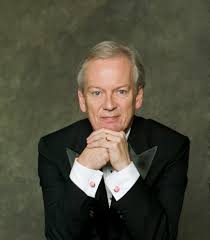The Dome, Brighton, 6 March 2016
I have a Penguin score of Brahms’ Variations on a Theme of Haydn which I purchased for 2/6 while studying for O level Music over half a century ago. It is still a favourite work and it was a real pleasure to encounter it again at the opening of yesterday’s matinee concert in the Dome.
Howard Shelley was both conductor and soloist, bringing a relaxed professionalism throughout. The Brahms brought us beautifully extended phrasing and an elegant balance across the surprisingly limited forces – just double wind and no trombones.
As if to prove that even concert pianists move with the times, he led Shostakovich’s Second Piano Concerto with the aid of an Ipad, controlled by a Bluetooth pedal. All very innovative and effective as it avoids flicking pages and presumably makes page-turners redundant from now on.
The cheeky opening movement was a fine contrast to the romantic warmth of the Brahms, but the gently spun lines of the second movement reminded us that Shostakovich was not averse to melody when he wanted it. The rapid articulation of the final movement was crisply held across all the players.
Where Mendelssohn’s Hebrides Overture sparkles as the sunlight bounces off the sea and the cliffs of Staffa, the Scottish Symphony is altogether more sombre. The clouds are much in evidence and not long after the start a storm briefly erupts. If the clarinet leads us in a dance in the second movement there is little that is distinctly Scots about it. The reflective third movement and urgency of the opening of the finale maintain this sense of unease, and it is not until the final pages blaze forth that there is any sense of light breaking through. It took Mendelssohn twelve years to complete and is one of his most sombre compositions. Howard Shelley found the nuances and questions that lie within the score and left us moved if not slightly uncomfortable.
A splendid afternoon and I hope we see Howard Shelley again soon.

